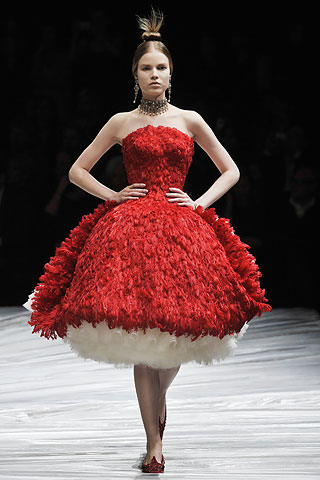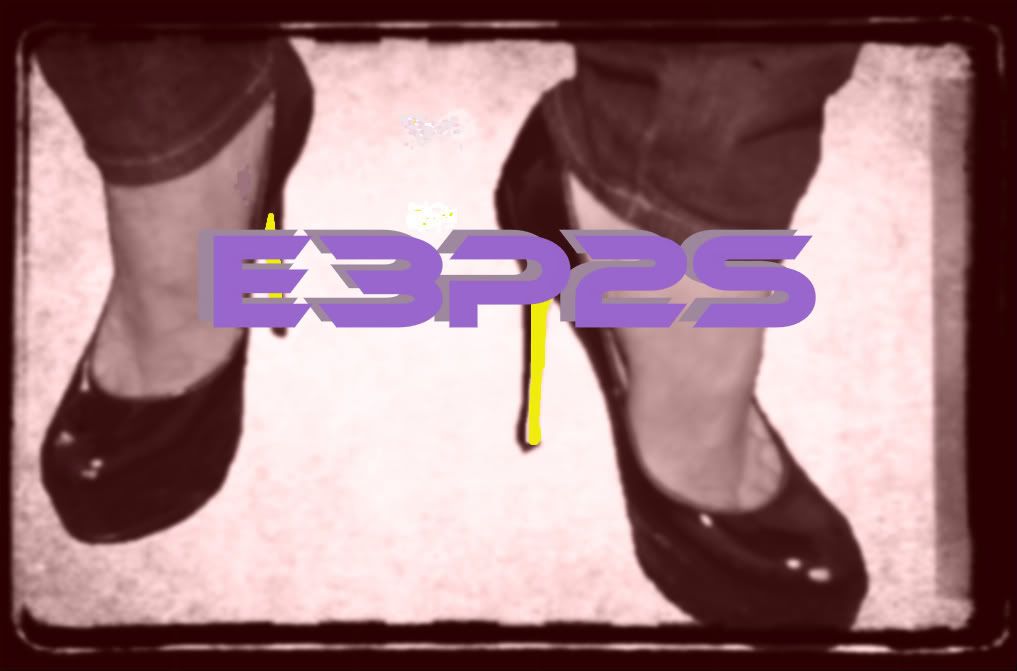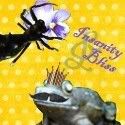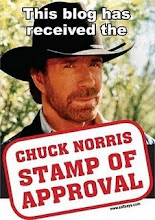Poor Givenchy...
 Givenchy Autumn 07 Couture
Givenchy Autumn 07 CoutureEven black fabric cannot hide the problem...
 Carolina Herrera Spring 09 RTW
Carolina Herrera Spring 09 RTW Carolina Herrera Spring 08 RTW
Carolina Herrera Spring 08 RTWIn apparently more everyday wear...
 tbd Ruffle knit top, from Nordstrom
tbd Ruffle knit top, from Nordstrom Marc by Marc Jacobs poplin top, from Nordstrom
Marc by Marc Jacobs poplin top, from NordstromAdmittedly, "ugly" might be a further problem with the two tops falling under the "everyday wear" category. The point can still be made, however. You know, the point I don't much want to repeat--the point of why ruffles often aren't the way to go. I am determined, though, that there must be exceptions.
Surely, the love of my life, Ann Demeulemeester, counts as proof of the anti-type. See here the salvation of ruffles...
I love how the repetitive shape of the ruffles (around the collar of the jackets), repeats the cross-over shape of the boot lacing.
One of my goals, as I've likely made implictly clear, if not explicitly, yet, is to continually re-imagine my own possibilities. As Bill Blass said, "Sometimes the eye gets so accustomed that if you don't have a change, you're bored. It's the same with fashion, you know. And that, I suppose, is what style is about." I don't suppose that boredom is the only reason for expanding ones imagination. Though I've focused primarily on talking about fashion here, really my belief is this: if we allow ourselves to expand our own possibilities in small, everyday ways--what we wear, how we eat, the way we get from home to work--we can establish the ground for expanding our possibilities in larger ways too--how we exist in the world, what we might actually do for work, how well we can get along with each other.
I recently participated in a class on race and racism. My experience was that many of the students came in unbelieving, or at least very unsure, in the reality of racism. (I live, afterall, in a predominately white, small mountain town.) As the class went on, and we all read various types of materials, some describing a theoretical view of racism, some describing the experience of living through it, many students began to see the realities of racism more clearly. That is, in reading different ways to understand racism, they became better able to imagine it, and so better able to see it in everyday life too. But, further, in seeing how it occurs in everyday life, students became, too, better able to understand how they may or may not participate in racism. Fashion might seem a much less crucial topic than something as dramatic as racism. But it seems a relevant site for re-imagining oneself in a similar fashion (pun, apparently, intended).
In my effort to incorporate the acceptable ruffle into my wardrobe, just as a means to expand these possibilities, I've brought the Demeuleemester 08 vest into common rotation, and I've also recently acquired this...
 Fernanda Pereira, from PixieMarket.com
Fernanda Pereira, from PixieMarket.com
I'll confess, I'm still figuring out how to imagine it into "everyday" use. I don't yet know how to imagine myself in an acceptable ruffle.
Surely, the love of my life, Ann Demeulemeester, counts as proof of the anti-type. See here the salvation of ruffles...
I love how the repetitive shape of the ruffles (around the collar of the jackets), repeats the cross-over shape of the boot lacing.
One of my goals, as I've likely made implictly clear, if not explicitly, yet, is to continually re-imagine my own possibilities. As Bill Blass said, "Sometimes the eye gets so accustomed that if you don't have a change, you're bored. It's the same with fashion, you know. And that, I suppose, is what style is about." I don't suppose that boredom is the only reason for expanding ones imagination. Though I've focused primarily on talking about fashion here, really my belief is this: if we allow ourselves to expand our own possibilities in small, everyday ways--what we wear, how we eat, the way we get from home to work--we can establish the ground for expanding our possibilities in larger ways too--how we exist in the world, what we might actually do for work, how well we can get along with each other.
I recently participated in a class on race and racism. My experience was that many of the students came in unbelieving, or at least very unsure, in the reality of racism. (I live, afterall, in a predominately white, small mountain town.) As the class went on, and we all read various types of materials, some describing a theoretical view of racism, some describing the experience of living through it, many students began to see the realities of racism more clearly. That is, in reading different ways to understand racism, they became better able to imagine it, and so better able to see it in everyday life too. But, further, in seeing how it occurs in everyday life, students became, too, better able to understand how they may or may not participate in racism. Fashion might seem a much less crucial topic than something as dramatic as racism. But it seems a relevant site for re-imagining oneself in a similar fashion (pun, apparently, intended).
In my effort to incorporate the acceptable ruffle into my wardrobe, just as a means to expand these possibilities, I've brought the Demeuleemester 08 vest into common rotation, and I've also recently acquired this...
 Fernanda Pereira, from PixieMarket.com
Fernanda Pereira, from PixieMarket.com















Considering how ouvert I can be about sexuality in general, it surprises me that it has never occurred to me how labial ruffles actually are. Perhaps because I have never favored ruffled fashion myself. I recall falling victim to a ruffle necked shirt with angel sleeves in Junior High and when I recognized the error, never returned to ruffles.
ReplyDeleteIn my opinion, ruffles do not work in home decor or potato chips either, but those are topics for another blog as they do not pertain to fashion.
The drapes and the rug would probably match better if you didn't have a matte-black ruffle.
ReplyDeletewas it you that showed me the designer who has purposely labial designs on their dresses??
ReplyDeletei think it was.